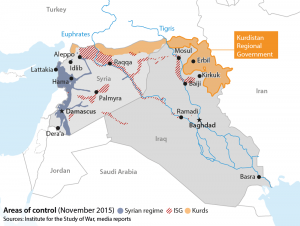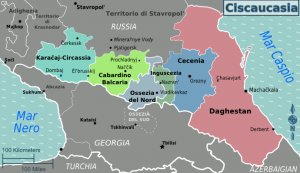Russia’s goals in Syria – and elsewhere
Brian M Downing
With the recent airstrikes on Aleppo, the Syrian war has taken yet another dreadful turn. Syrian and Russian aircraft, jets and helicopters, are pummeling civilian districts, relief convoys, water pumping stations, and medical facilities. World opinion, weary of the mayhem that has been going on in the region for so long, has been muted.
Russia will continue to deny responsibility, claiming that other nations’ aircraft are also operating over the city and that its targets are exclusively terrorists. Moscow’s harsh hand in Syria is a demonstration of its military might and iron will. It will reverberate in Syria and elsewhere, in and out of the region.
The Shia rump state
Assad may have illusions of reconquering his father’s domain but Putin does not. That task would take years of intense effort, involving more and more Russian resources and in all likelihood the importation of additional foreign units. The campaign would be long and costly, with no assurance of success as Saudi Arabia and its allies would increase their financial backing to rebel groups, as might the US and the West.
The ongoing campaign for Aleppo aims to clear swathes of western and central Syria of rebel forces and to build a defensible Shia rump state. It is not what Damascus and Tehran want, but Moscow has say here. The methods are brutal and in violation of international conventions, but they have already been used effectively by Russia in Chechnya (2000) and by Syria against the Muslim Brotherhood in Hama (1982).
The same methods used on Syria’s former largest city will be used against other rebel-held towns and villages, possibly as far to the east as Raqqa, the ISIL capital.
A Shia corridor?
The end of Saddam’s rule in 2003 brought a Shia government to Iraq, and more significantly for regional geopolitics, a corridor linking Shia powers in Lebanon and Syria with coreligionists in Iran and Iraq. The Saudis and their allies view this through a lens of sectarian enmity and see an ominous threat. The rise of Sunni rebel groups in Syria, and ISIL’s 2014 offensive in Iraq, closed the corridor. Much of the region’s conflicts in coming years will center on restoring the corridor or creating a Sunni buffer along it.
 Full control of the Syria-Iraq border by Damascus and Baghdad is unlikely. Sunni forces will control large parts of it for years to come. Efforts for full control would be costly and probably futile. A road route stretching across southern Syria into southern Iraq is possible. Much of the territory is free of hostile forces, the population is sparse, and the terrain is inhospitable to sizable guerrilla forces.
Full control of the Syria-Iraq border by Damascus and Baghdad is unlikely. Sunni forces will control large parts of it for years to come. Efforts for full control would be costly and probably futile. A road route stretching across southern Syria into southern Iraq is possible. Much of the territory is free of hostile forces, the population is sparse, and the terrain is inhospitable to sizable guerrilla forces.
Russia could help secure the few towns along the route and use this to pressure Assad and the mullahs to abandon more grandiose schemes and commit to talks.
Domestic turmoil
Russia’s air campaign has greatly angered rebel groups, many of which have fighters from Chechnya and Dagestan, restive areas in the Russian  Caucasus. The airstrikes on Aleppo will increase their desire for vengeance. The ferocity of the airstrikes, though, may be sobering. Russia leveled the Chechen capital of Grozny in 1999-2000 and is willing to do the same to any insubordinate town or village today.
Caucasus. The airstrikes on Aleppo will increase their desire for vengeance. The ferocity of the airstrikes, though, may be sobering. Russia leveled the Chechen capital of Grozny in 1999-2000 and is willing to do the same to any insubordinate town or village today.
The Aleppo message will be heard in the Crimea too, where ethnic Ukrainians and Tatars show signs of resistance to the recent annexation, and in parts of the Ukraine adjacent to the Crimea, where Moscow will likely move into in coming months.
The global contest
Russia, in conjunction with China and Iran, is challenging American positions in numerous parts of the world. China presses against Japan, the Philippines, and Vietnam. Iran buzzes US warships in the Persian Gulf. Russia does the same in the Baltic and elsewhere. The Aleppo campaign signals that Russia is taking control of evens in Syria and the US’s ability to respond is limited.
Even though a Russian carrier will be offshore soon, the US has sufficient assets to crater runways in Syria and drive Russian and Syrian aircraft from the skies. A strong response would come elsewhere, though, and Russia’s zeal for prestige exceeds that of the US.
Copyright 2016 Brian M Downing
Brian M Downing is a national security analyst who has written for outlets across the political spectrum. He studied at Georgetown University and the University of Chicago, and did post-graduate work at Harvard’s Center for International Affairs.